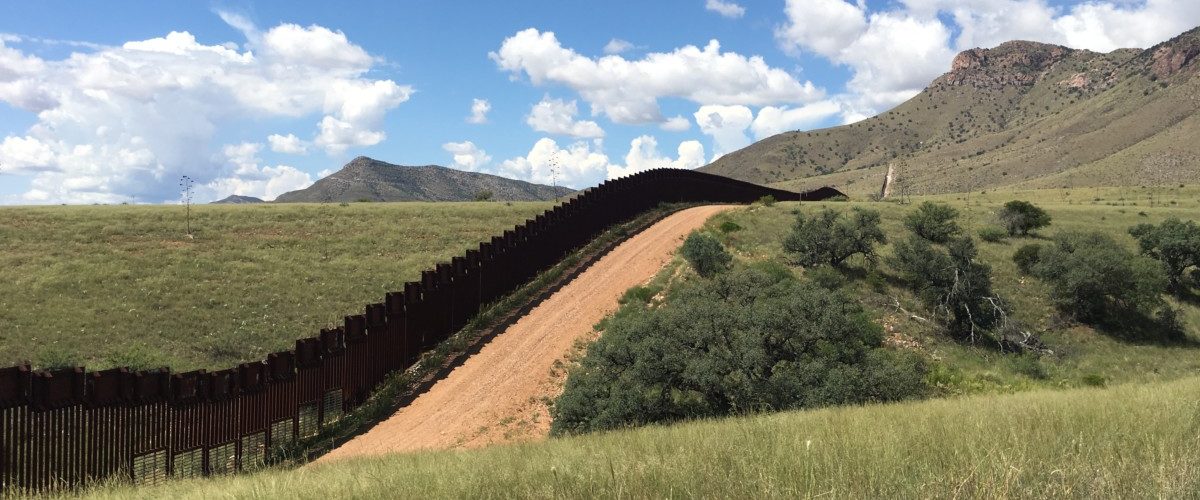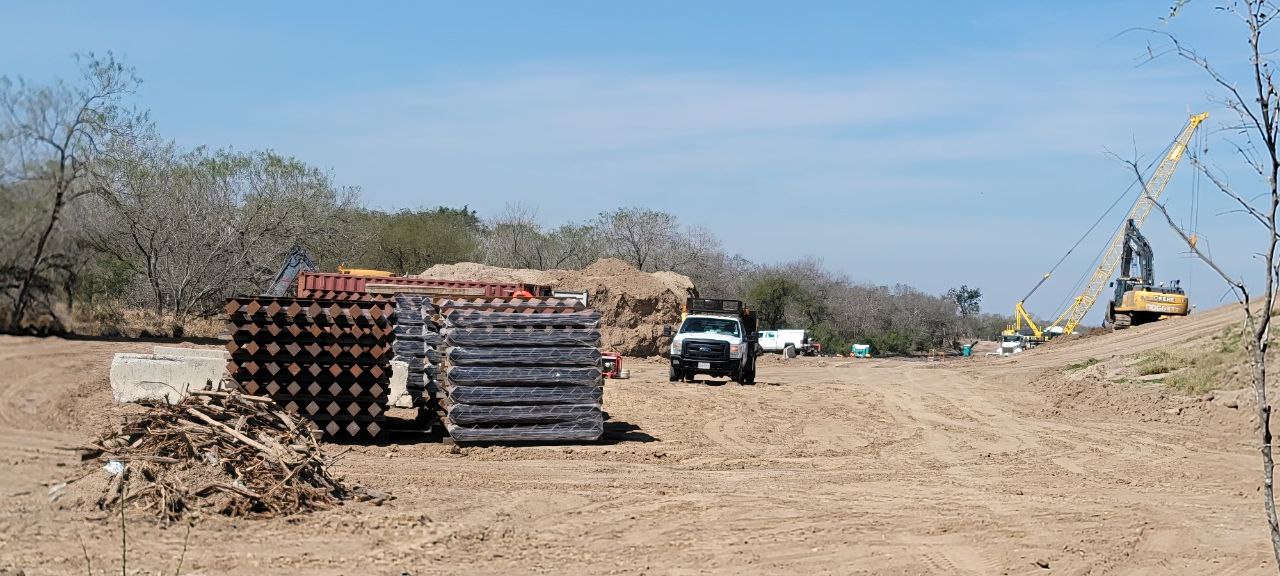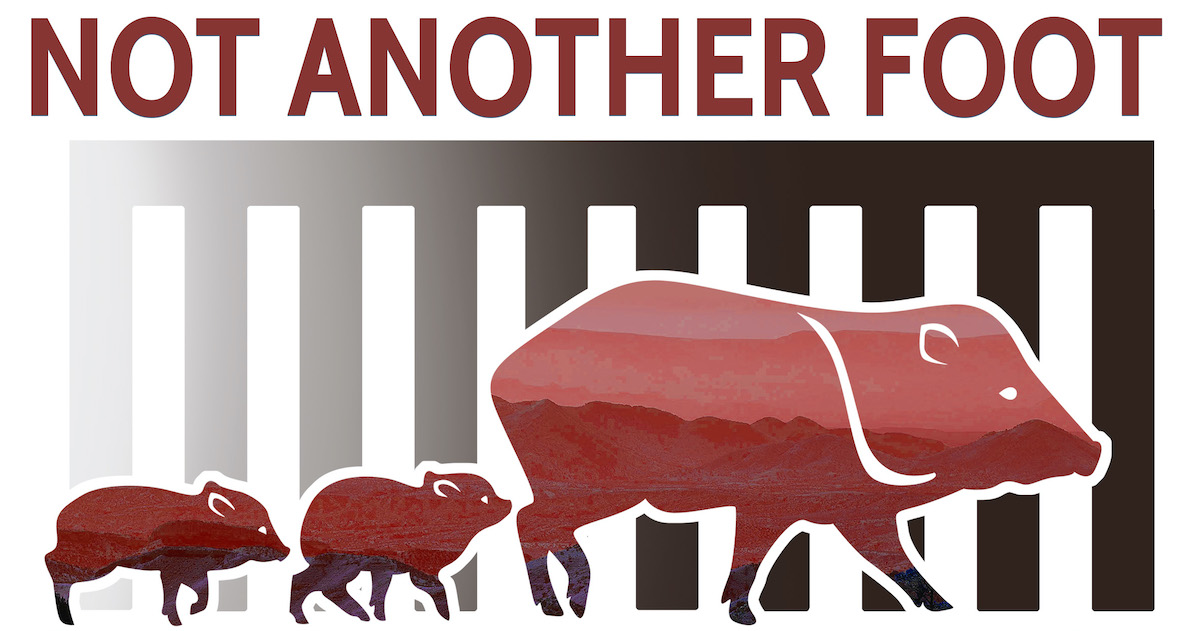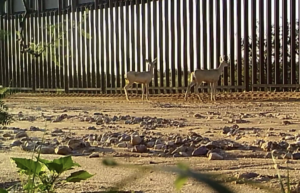
The wall being constructed at the U.S.-Mexico border has cut through the heart of the Sky Islands, causing enormous environmental destruction — endangering springs, damaging waterways like the San Pedro River, and stopping wildlife in their tracks. It’s also harming public lands, Indigenous lands and culture, local communities, human rights, and civil liberties.
This goes against everything we stand for at Sky Island Alliance, with our mission to protect and connect the region’s landscapes, people, and wildlife for the benefit of all. Read on to learn more about what we’re doing to protect our borderlands from this threat.
Here’s what we’re doing to protect our Sky Islands from the border wall:
- Studying borderlands wildlife and ecosystems and sharing that vital information with the public and policymakers;
- Advocating for new border policies to reinstate laws and stop wall building; and
- Working to restore wildlife pathways and waterways across the border.
Explore this page to learn more about the U.S.-Mexico border wall, law waivers that have enabled its construction, local impacts, and how you can join our crucial work.

The federal government has been developing U.S.-Mexico border wall infrastructure since the early 1990s. In 2005 Congress passed the Real ID Act, which allows the Department of Homeland Security to waive any local, state, or federal laws to build border infrastructure. To date at least 84 environmental laws have been ignored — along with other laws and statutes, including ones protecting Native cultural resources.
On Jan. 20, 2021, after years of accelerating wall construction under the Trump administration, President Biden issued a proclamation pausing all activity until funding and contracts were reviewed — but some wall construction has continued in Texas.
The Biden administration returned funds to the Department of Defense that had been illegally diverted to build border wall in Arizona. Despite the incredible need for restoration at the border, no money for it has been approved by Congress, and the details of U.S. Customs and Border Protection’s pending remediation plan remain unclear. While long-term habitat restoration at the border isn’t yet happening, Homeland Security has authorized CBP to begin short-term remediation projects in Arizona. The situation is ongoing and still developing.
Latest News
Sept. 15, 2023: The United States v. Ducey cases were dismissed after the parties reach agreement. As part of the settlement, the state of Arizona agreed to pay $2.1 million to the Coronado National Forest for road repair, earthwork, and invasive species monitoring and treatment at the site of the shipping-container wall. Read more.
Sept. 5, 2023: The U.S. Government Accountability Office released its report requested by Congressman Raúl Grijalva, “Southwest Border: Additional Actions Needed to Address Cultural and Natural Resource Impacts from Barrier Construction.” Summary and full report here.
July 17, 2023: The Sierra Club announced its long-awaited settlement in the case Sierra Club v. Biden, which marks a monumental victory for wildlife and borderland communities impacted by illegal wall construction. Customs and Border Protection has agreed to stop building wall systems in border areas where the illegal funds were directed and will invest in consultation with borderland communities prior to taking further actions in these areas. To improve wildlife connectivity between the U.S. and Mexico, CBP will install additional openings for wildlife in the border wall, keep a set of floodgates open for two years, and provide funding for environmental restoration along the border. Read more.
March 15, 2023: The public closure order was lifted for the shipping-container site on the Coronado National Forest because the state of Arizona had successfully removed the makeshift wall.
Dec. 21, 2022: Arizona Gov. Doug Ducey’s office at last agreed to remove all shipping containers from Yuma and the Coronado National Forest, following a lawsuit from the U.S. Department of Justice regarding the illegal project. The state’s legal promise also entails restoration of damaged lands. A meeting between state officials and the Coronado National Forest is planned for this week to coordinate next steps, with the goal being immediate removal/restoration.
Dec. 13, 2022: Arizona Gov. Doug Ducey’s office formally acknowledged that all work has ceased on the shipping-container project at the southern border. Containers being stored in a lot north of Sierra Vista were hauled over the next days to a nearby prison complex.
Dec. 12, 2022: The U.S. Department of Justice filed a request for an injunction to halt Gov. Ducey’s illegal shipping-container project on Arizona’s southern border. It also asked for the containers’ removal and restoration of the area that’s been damaged. When the injunction may come is unknown, but there’s been no construction since Dec. 7.
Dec. 2, 2022: The makeshift wall of illegally placed shipping containers has expanded to more than 3.25 miles. Wildlife passage has been blocked, large oak trees have been bulldozed, and numerous washes are dangerously plugged. Concerned members of the public, however, have peacefully assembled near the construction site in recent weeks, using their presence to slow wall progress.
Nov. 23, 2022: The U.S. Department of Justice responded to Arizona Gov. Ducey’s lawsuit against the Forest Service requesting that the governor’s claim be dismissed by a district court. The legal brief declares that federal laws are being broken by the state with the placement of shipping containers on the Coronado National Forest. It also asserts that the state has no legitimate claim to the federal land along the border for multiple reasons, including because it was federal land before Arizona even became a state.
Nov. 14, 2022: Democratic candidate Katie Hobbs is confirmed victor in the race for next Arizona governor, raising the possibility that the shipping container-fiasco will enter a new phase. The hope is that she’ll pause the contract, drop the state’s lawsuit against the feds, and support restoration and removal of the containers. Hobbs takes office Jan. 2, 2023.
Nov. 1, 2022: SIA Program Director Emily Burns and Border Coalition cofounder Dinah Bear gave an hour-long Coffee Break talk detailing the latest with Gov. Ducey’s illegal shipping container wall at the Arizona border. Includes insights into the conflict between the state and federal government along the 60-foot-wide strip of land next to the border known as the Roosevelt Reservation. Also joining was Wildlands Network’s Myles Traphagen, who gave an update on border remediation plans and wall construction in other parts of Arizona.
Oct. 5, 2022: Shipping containers sent by the state of Arizona were first observed on the Coronado National Forest. Private trucks brought the containers onto the forest from the west, and they were placed in a former construction staging area along the border in the southeast corner of the forest’s Sierra Vista district (wall segment Tucson Project B:6). Here, the shipping containers were placed around a large area full of heavy equipment and portable lights. “Keep Out/Authorized Personnel Only” signs were placed around the container fort, and armed private security guards stopped members of the public that were legally traveling on Forest Service roads near the site. Within 48 hours, the number of containers grew to more than 40. More than 100 additional containers were staged by the Whetstone Mountains, and on Oct. 13, some of those containers were observed being loaded onto trucks for movement.
The shipping container trespass site is in the southern Huachuca Mountains less than a mile from the southern terminus of the Arizona Trail. It’s within jaguar critical habitat in a corridor where both jaguars and ocelots have been recorded since 2012. Other species of conservation concern in the area include beavers, black-tailed prairie dogs, Chiricahua leopard frogs, elegant trogons, whiskered screech owls, and buff-breasted flycatchers.
July 11, 2022: The Department of Homeland Security published an update on its border remediation plan. Unfortunately there was no honest accounting of the severe damage the wall continues to cause or the urgent need for restoration of surrounding lands. Instead the agency has decided to use money from 2020 to continue funding stadium lights, cameras, and detection technology in areas where physical barriers were previously constructed. This puts approximately 455 miles of the southwestern border at severe risk of light pollution and poses a major threat to migratory birds and other wildlife. In Arizona alone this plan will affect such treasured areas as Organ Pipe Cactus National Monument, San Bernardino National Wildlife Refuge, Guadalupe Canyon, San Pedro Riparian National Conservation Area, and Cabeza Prieta National Wildlife Refuge. The agency also noted that, “due to higher-than-expected remediation costs,” it will end the environmental planning process in Texas’ Laredo Sector.
May 10, 2022: Along with 103 diverse organizations, Sky Island Alliance signed a letter to Congress, urging it to oppose border wall funding in its Department of Homeland Security appropriations for FY2023. We specifically asked that any existing border wall funds be rescinded and that money set aside in the future be used to begin the process of healing the borderlands. Local communities and wildlife have suffered from careless border wall construction, and it’s up to Congress to rectify this mistake.
Read our full list of border wall updates here.- It has reduced the number of wildlife migration corridors, separating animals from food, habitat, and their core populations in the U.S. and Mexico. The wall especially hurts large mammals, low-flying birds, and endangered species like jaguars, ocelots, and Mexican gray wolves.
- At least 60 new roads were graded for border patrol and for access to construction sites. In the process a lot of water was wasted to keep dust down. Cacti, trees, and other plants were bulldozed and removed. And vehicle traffic created noise and light pollution that disturbed wildlife.
- Water was pumped from underground aquifers and springs to mix with concrete for the wall, and sections were built across waterways like the San Pedro River, which dammed certain places or reduced flow. This harm to our rivers and aquifers is especially devastating during times of drought.
- New border lighting disrupted nocturnal species that rely on the cover of darkness to travel and hunt. Through our Border Wildlife Study, we’ve found that a majority of all mammal sightings occurred between sunset and sunrise, and half of the mammal species we’ve photographed have only been seen at night.
- Indigenous communities and Tribal lands have been harmed by the border wall. Barrier construction has disturbed or destroyed graves and cultural sites and infringes on Native sovereignty. Sacred lands and springs were torn apart by road grading and wall construction without meaningful consultation. Learn more about why the Tohono O’odham Nation opposes the wall.
- Global Inequities and Political Borders Challenge Nature Conservation Under Climate Change
- Nature Divided, Scientists United: U.S.–Mexico Border Wall Threatens Biodiversity and Binational Conservation
- A Wall in the Wild
- Potential Effects of the United States-Mexico Border Fence on Wildlife
How the Wall Harms the Sky Islands
At least 84 federal and state laws and regulations, including the Endangered Species Act and the National Environmental Protection Act, were waived to advance border wall construction in California, Arizona, New Mexico, and Texas.
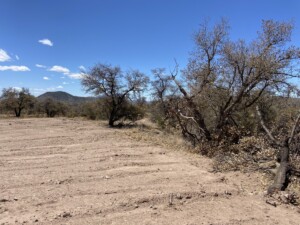
Here are just a few ways the wall is doing specific harm:
Key Articles


